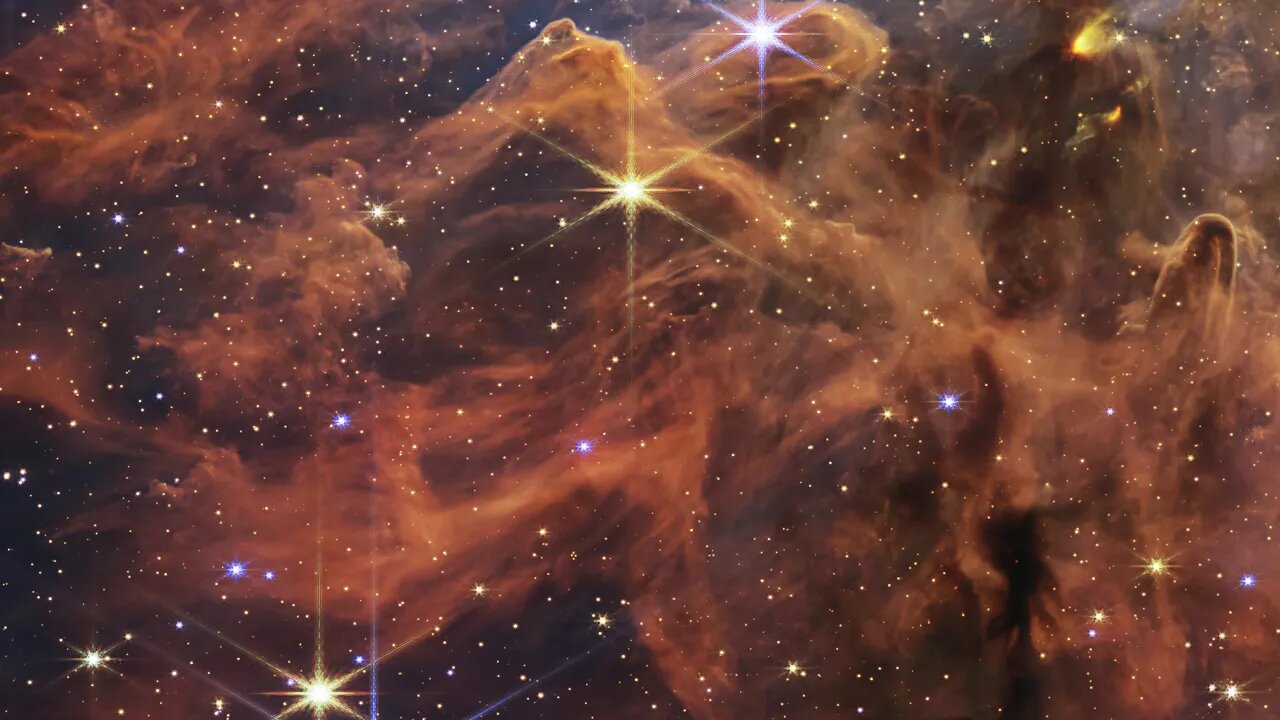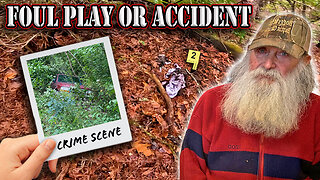Premium Only Content

“Cosmic Cliffs” in the Carina Nebula Webb Space Telescope 4K crop 4 #shortvideo #space #photography
4K crop 4 of 4
What looks much like craggy mountains on a moonlit evening is actually the edge of a nearby, young, star-forming region NGC 3324 in the Carina Nebula. Captured in infrared light by the Near-Infrared Camera (NIRCam) on NASA’s James Webb Space Telescope, this image reveals previously obscured areas of star birth.
Called the Cosmic Cliffs, the region is actually the edge of a gigantic, gaseous cavity within NGC 3324, roughly 7,600 light-years away. The cavernous area has been carved from the nebula by the intense ultraviolet radiation and stellar winds from extremely massive, hot, young stars located in the center of the bubble, above the area shown in this image. The high-energy radiation from these stars is sculpting the nebula’s wall by slowly eroding it away.
NIRCam – with its crisp resolution and unparalleled sensitivity – unveils hundreds of previously hidden stars, and even numerous background galaxies. Several prominent features in this image are described below.
-- The “steam” that appears to rise from the celestial “mountains” is actually hot, ionized gas and hot dust streaming away from the nebula due to intense, ultraviolet radiation.
-- Dramatic pillars rise above the glowing wall of gas, resisting the blistering ultraviolet radiation from the young stars.
-- Bubbles and cavities are being blown by the intense radiation and stellar winds of newborn stars.
-- Protostellar jets and outflows, which appear in gold, shoot from dust-enshrouded, nascent stars.
-- A “blow-out” erupts at the top-center of the ridge, spewing gas and dust into the interstellar medium.
-- An unusual “arch” appears, looking like a bent-over cylinder.
This period of very early star formation is difficult to capture because, for an individual star, it lasts only about 50,000 to 100,000 years – but Webb’s extreme sensitivity and exquisite spatial resolution have chronicled this rare event.
Located roughly 7,600 light-years away, NGC 3324 was first catalogued by James Dunlop in 1826. Visible from the Southern Hemisphere, it is located at the northwest corner of the Carina Nebula (NGC 3372), which resides in the constellation Carina. The Carina Nebula is home to the Keyhole Nebula and the active, unstable supergiant star called Eta Carinae.
Object Name Carina Nebula, NGC 3324
Object Description Star-forming region in the Carina Nebula
Instrument NIRCam
Exposure Dates 3 June 2022
Filters F090W, F187N, F200W, F335M, F444W, F470N
Credits: IMAGE: NASA, ESA, CSA, STScI
Processed by STYX AI
#science #new #nasa #space
-
 LIVE
LIVE
SpartakusLIVE
6 hours agoSaturday SPARTOON Solos to Start || Duos w/ StevieT Later
2,644 watching -
 28:40
28:40
SLS - Street League Skateboarding
8 days agoTOP MOMENTS IN WOMEN’S SLS HISTORY! ALL THE 9’s - Rayssa Leal, Leticia Bufoni, Chloe Covell & more…
8.18K -
 23:00
23:00
Exploring With Nug
14 hours ago $10.27 earnedHis Truck Was Found Crashed in the Woods… But He’s Gone!
59K6 -
 27:09
27:09
MYLUNCHBREAK CHANNEL PAGE
15 hours agoDilmun: Where Life Never Ends
55.8K39 -
 2:58:32
2:58:32
Slightly Offensive
8 hours ago $43.08 earnedHas Trump FAILED US? The ABSOLUTE STATE of The Right Wing | Guest: Nick Fuentes
66.9K37 -
 1:37:05
1:37:05
AlaskanBallistics
3 hours ago $0.67 earnedI Love This Gun PodCast #16
13K3 -
 2:59:26
2:59:26
Twins Pod
12 hours agoEMERGENCY PODCAST WITH ANDREW TATE! - Twins Pod - Special Episode - Andrew Tate
139K144 -
 2:52:01
2:52:01
Jewels Jones Live ®
2 days agoTRUMP SECURES BORDER | A Political Rendezvous - Ep. 113
68.8K36 -
 25:02
25:02
marcushouse
1 day ago $40.62 earnedStarship Just Exploded 💥 What Went Wrong This Time?!
149K76 -
 12:00
12:00
Silver Dragons
1 day agoBullion Dealer Reveals Best Silver to Buy With $1,000
91.9K9